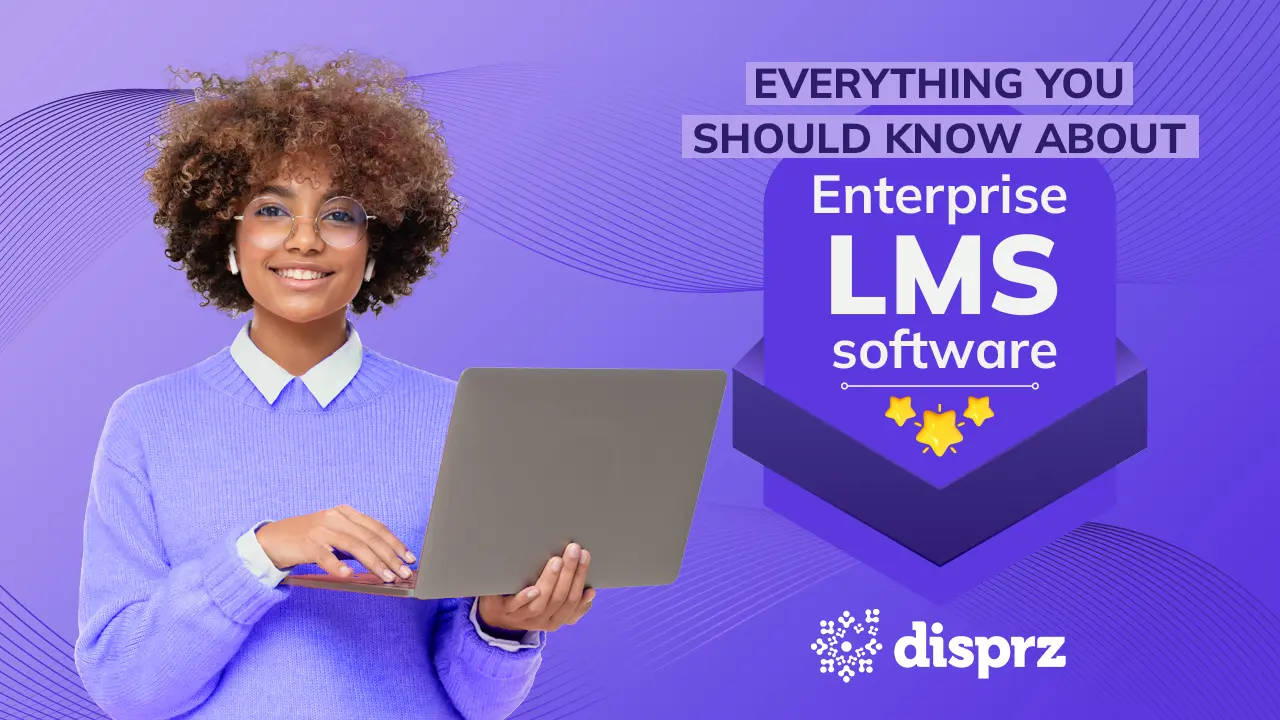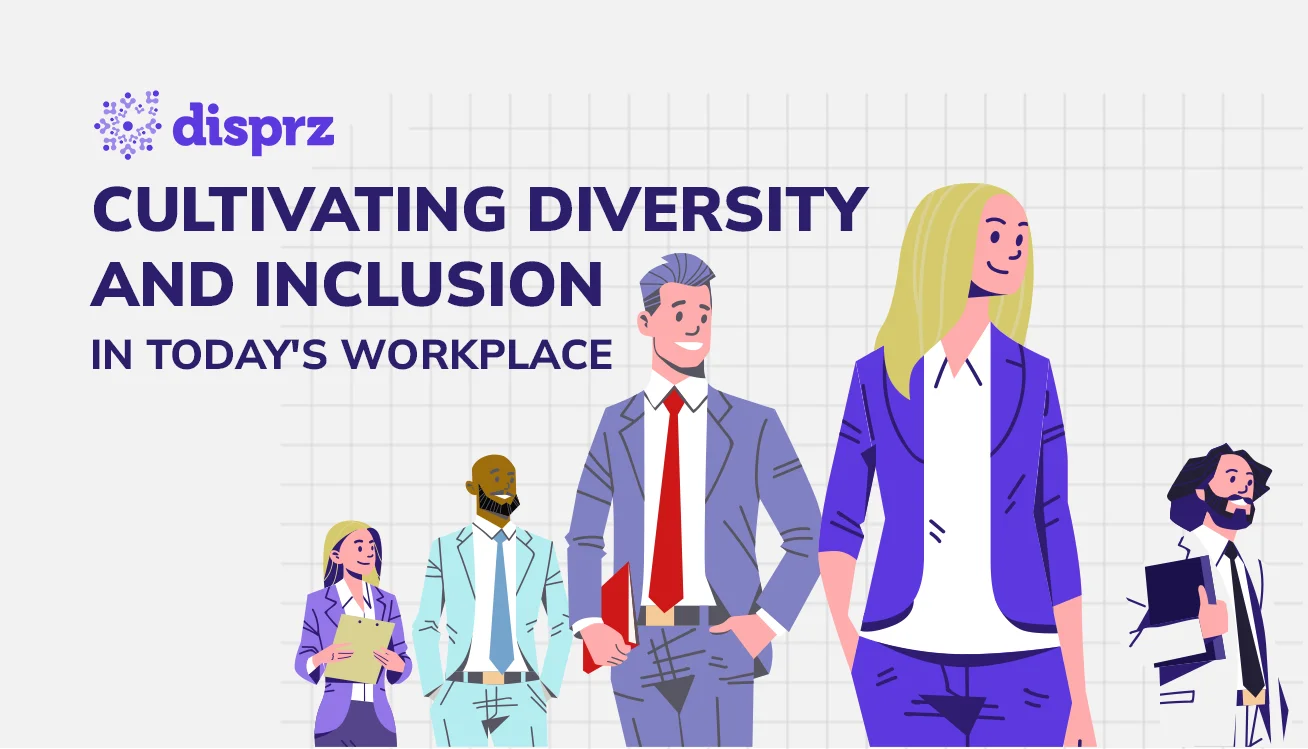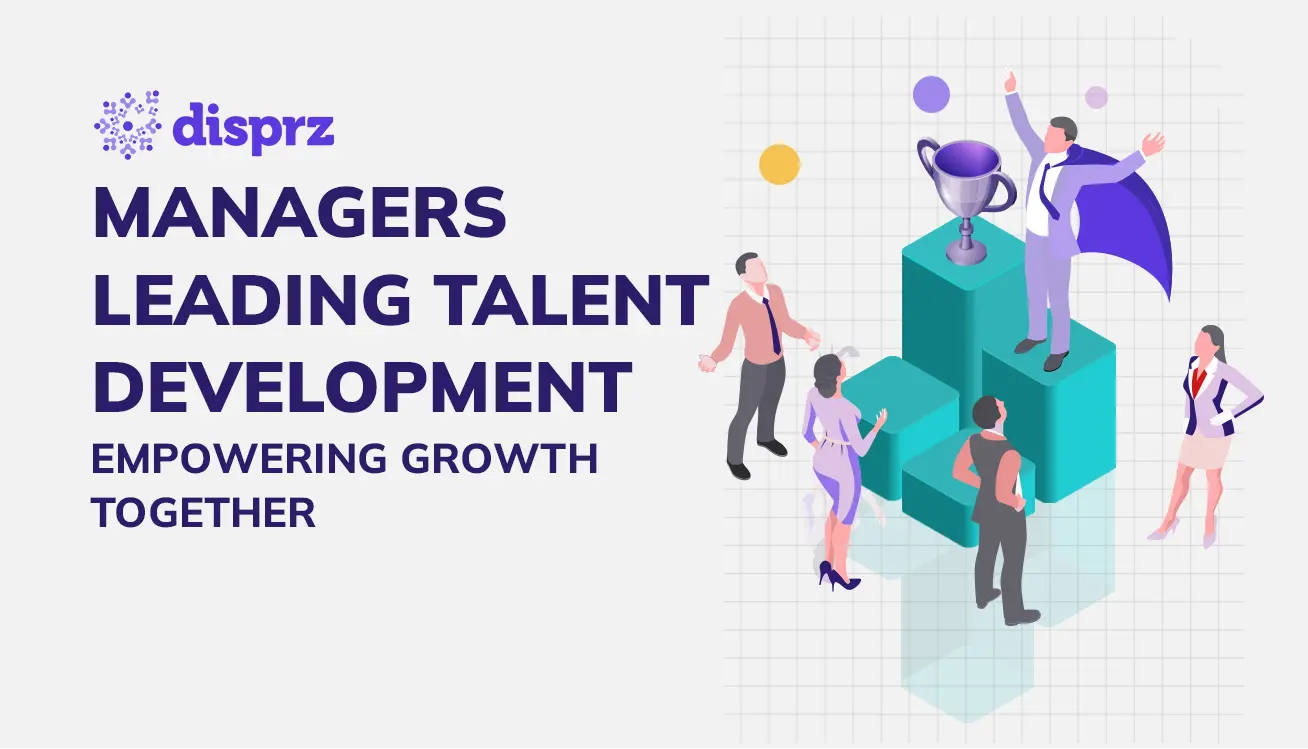
6 min read
• 14 Sep 2023
Employee Engagement: Is Your L&D Program Missing the Main Ingredient?
Do you know how to use employee engagement strategies in your L&D initiatives to bring out the best workforce performance? Learn how today.
- Importance of employee engagement in workplace learning
- 4 Benefits of implementing a successful employee engagement strategy for L&D
- 7 Crucial Employee Engagement Areas In Talent Development
- Employee engagement ideas and best practices
- Final Thoughts
-
eBookEmployee Upskilling - A Detailed Blueprint For Building A Skills-Driven Learning Culture
Table of contents
According to Gallup, 36% of U.S. employees are engaged at work. However, internationally, just 20% of employees are engaged. Even among highly engaged employees, 1 in 5 are at risk of burnout. The unprecedented drop in the number of engaged workers results in a huge decline in their potential performance outcomes. Just driving employee learning won’t cut it, but you must make it engaging to capture their interest.
Employee engagement is the secret sauce that makes a company’s learning and development drive successful. Do you know that higher employee engagement drives elevated productivity? Using the right employee engagement strategies in workplace learning benefits organizations and the workforce.
If organizations neglect the employee growth process, it’s frustrating for the employees, leading to significant disadvantages for the organization. So, it’s essential to implement employee engagement activities in your L&D strategy to encourage a continuous learning culture. More importantly, a motivated workforce has a powerful sense of belonging and is better prepared to reach their full potential.
In this blog, let’s dive deeper into using core employee engagement strategies, knowing the how, what, and why of employee engagement to develop a thriving business.
Importance of employee engagement in workplace learning
As per the LinkedIn’s 2023 workplace learning and development report, 83% of of organizations want to build a more peoplecentric culture.
This stat implies that employee engagement will be one of the critical elements in building a better workplace.
In this regard, let’s understand why are organizations heading towards building a people centric culture and how crucial is employee engagement in workplace learning.
- Employee engagement serves immediate benefits in retention rate, job satisfaction, and career growth. Organizations understand that their employees are their critical lever for business success.
- Learning, skilling, and training are essential to equip the workforce with relevant knowledge to enhance performance. You can employ many employee engagement initiatives to help boost your organization’s L&D drive, from initiatives like blended learning, creating contests, setting up a leadership board, etc.
- L&D plays a crucial role in helping employees understand their function and purpose within the organization. It facilitates mandatory training, guides the workforce through their roles & responsibilities, and increases their enthusiasm. But if the learning journeys aren’t engaging enough, it might feel like an additional burden other than their job responsibilities.
Having an effective employee engagement strategy is crucial to embed learning in the flow of work.
Employees will feel more secure, prepared, and satisfied when working in their roles while having more control over their personal and professional development. They also expect learning to be flexible to balance professional growth and work.
4 Benefits of implementing a successful employee engagement strategy for L&D
An organization can reap enormous benefits by promoting a learning culture. Employee engagement strategies help expedite the skilling process.
1. Enhanced productivity
Gallup estimates that a disengaged employee loses 18% of their yearly compensation due to less productivity. On the other hand, a Forbes report reveals that teams with high employee engagement levels are 21% more profitable. Employee engagement helps you drive the training & upskilling of the workforce to set clear performance standards and provide the necessary resources to meet them.
Businesses can employ engaging L&D efforts to help boost staff knowledge, skills, competency, and engagement levels. It equips them to do their jobs effectively.
For instance, did you know that a leading pharmacy retail chain in India with more than 200 stores and 5000+ employees was able to boost time-to-productivity with learning? They implemented faster onboarding within 30-days with the Disprz LXP skilling suite to drive engaging workplace learning experiences to equip their workforce with the necessary knowledge, making them job-ready.
Check out their success story study here.
2. Lower burnout
Employee engagement is the polar opposite of employee burnout. It amplifies employee morale. You can consistently ensure your teams’ full participation with engaging training and learning solutions, resulting in more productive individuals.
Organizational success increasingly depends on a skilled workforce that learns, are proactive, exceptional team players, and are devoted to the highest performance levels. Creating engaging training resources helps organizations facilitate this common goal of continuous development, helping them become more productive.
3. Improved employee retention
Deloitte reported that organizations with a strong learning culture have 30%-50% higher engagement and retention rates.
Acknowledging & training the existing talent and identifying the right skills for the new recruits empower your organization with a talented workforce. It’s a critical factor for the company’s future. You are creating a company culture where employees feel valued and devoted to the company, increasing their retention rate and ensuring long-term success.
It’s a fact that employees stay with those companies where they are nurtured as a professional, have a clearly defined path to career growth, and feel appreciated for their work. But the skilling process should accommodate their work schedule and not be an additional load. You can optimize the lower employee turnover by implementing engaging learning materials. It gives a company access to a highly retained workforce pool of highly skilled and dedicated workers.
4. Better outcomes
Employers are experimenting with unconventional methods to boost worker productivity, from placing plants in the workplace to wearable activity monitors. Yet, employee engagement is the right answer. You can implement engaging learning resources for employees to motivate them to work hard and put in extra effort for their jobs, increasing productivity and creativity.
Businesses must deploy engaging L&D measures for employees to impact overall results. However, an outcomes-based approach to corporate training successfully elevates workforce knowledge and performance.
7 Crucial Employee Engagement Areas In Talent Development
Employee engagement is about people. Growing leaders is a path that businesses must undertake to secure long-term viability. This journey, however, can only be successful if it teaches how to communicate with teammates, keep them engaged, and ensure that they have everything they need to get the job done.
There are several components of employee engagement strategies that you need to implement in your learning drive. So, below are the ways to have an engaged workforce:
1. Blended learning
Its objective is to make necessary changes to ensure the learning journeys are more personalized, engaging, and efficient. Blended learning produces better employee training results when compared to other traditional learning methods.
You can successfully engage your workforce with training by increasing the use of blended learning. It helps you grab employees’ attention and easily retain them. You can use asynchronous learning to provide a better balance to the blended learning approach. Asynchronous learning helps boost employee engagement and is more effective in all L&D initiatives as much-needed flexibility for employees to learn at their own pace.
2. Contests, Badges & Leaderboard
Everybody has taken part in a game with a leaderboard or rankings. Contests, badges, and leaderboards allow employees to learn engagingly with games without going through trainer-based training. This makes these a terrific tool to enhance engagement in any organization.
Employee engagement primarily depends on acknowledgment and helps you drive learning at an exponential rate. As per Gallup/Workhuman, employees are 73% less likely to experience burnout and 56% less likely to look for a new job when their employers focus on employee appreciation. They are fantastic tools for promoting friendly competition & employee interest.
3. Skill and Role Score Analytics
Did you know that 40% of businesses believe that the learning strategy needs to be aligned with their corporate objectives? You can apply analytics to L&D efforts to gain actionable insights into learning behavior and enhance the employee experience. It’s impossible to understand the success of the organization’s learning programs or what you need to change in the current model without a well-defined measuring process.
You can leverage a learning experience platform to access the data automatically on skill and role score analytics and understand the learning behavior. It will help you make the learning programs more engaging and impact by improving employee skills and knowledge with training. But if the training is ineffective, it wastes time and money. It helps the company achieve its strategic goals by making learning more engaging to facilitate efficiency checks, cost optimization, and performance enhancement.
Check how Disprz LXP transformed Deloitte workplace into a thriving learning culture.
4. Hyper-personalized Learning
We have reached the era of hyper-personalization thanks to the growth of digital transformation and innovation. Every recommendation, from the e-commerce sites we purchase to the online streaming services we use, is tailored to meet our unique expectations and preferences. Given this circumstance, it’s only reasonable that personalization in learning plays a huge role in engaging the employees in the future.
You can’t achieve employee involvement with a cookie-cutter engagement strategy. Every employee is different from the next, with distinct expectations. Current technology advancements are making it easier to collect and evaluate these learning strategies that serves as the foundation for personalization. Organizations must tailor the experience for each employee to achieve optimum productivity and performance.
5. Skill mapping for employee growth
Nearly 80% of employees worldwide are still not engaged or are actively disengaged at work, despite more effort from companies. This can be due to multiple factors but can be alleviated with effective skill mapping.
Skill mapping helps you identify the needed skill for each job role to conduct skill-driven learning throughout the organization.
But is it enough to motivate your workforce to make training part of their routine? You need to make the skill-driven approach more engaging so that employees take accountability to drive their own growth. An AI-driven learning experience platform (LXP) can help you centralize all your efforts in one space.
Deploying Disprz LXP enables you to develop employee skills to identify weaknesses, drive retention, increase productivity and facilitate new hire and employee adaptability to change roles & responsibilities.
6. KPI-based coaching
An organization’s ability to reach its goals indicates the quantitative metric, a Key Performance Indicator (KPI). For instance, if the objective is to offer superior customer service, you can use the KPI metric that quantifies the number of customer support requests open at the end of the week. It helps you track your progress toward your goal. KPI-based coaching enables you to detect issues and enhance learning, adding value for customers and the company.
Additionally, it ensures the employees’ professional development and that their learning journeys are aligned with the company’s goals. Your employees are more prepared to perform their duties by honing their abilities and broadening their knowledge to discover new methods to increase their efficiency. It shows how important employee engagement is in learning.
7. 360-Degree performance review
Through a 360-degree performance review, employees will discover their strengths and flaws. Everyone has blind spots, and the worst-case scenario is when they do not have the required guidance to correct these. Let them know their strengths and areas for growth and raise employee satisfaction within the workforce.
When employees become self-aware, they can objectively evaluate themselves and improve to satisfy the expectations of their team and other coworkers. Those who perceive progress in a business’s culture remain engaged and committed to the organization, leading to increased productivity.
Employee engagement ideas and best practices
Employee Recognition: Recognizing and appreciating employees for their accomplishments fosters a positive work environment. Implement a formal recognition program, acknowledge achievements publicly, and provide rewards or incentives. Personalized recognition, whether through awards, shout-outs, or thank-you notes, reinforces the value of individual contributions and boosts morale.
Employee Feedback: Regularly seeking input from employees through surveys, focus groups, or one-on-one conversations demonstrates your commitment to their opinions. Act on their feedback to address concerns, improve workplace conditions, and enhance job satisfaction. Engaged employees who feel heard are more likely to contribute ideas and stay committed to their roles.
Effective Communication: Maintaining transparent, consistent, and open communication is vital for engagement, especially in remote work settings. Utilize various communication channels, such as video meetings, emails, and instant messaging, to keep remote teams connected. Share company updates, provide clear expectations, and encourage two-way dialogue to prevent isolation and misunderstandings.
Final Thoughts
Encourage your employees to achieve their best by developing an engaging learning culture in the workplace. Create a platform for peer-to-peer knowledge exchange to link distant teams and establish direct channels of contact across your workforce.
Making an LXP your core training environment results in more engaging employee training. It encourages new employees to take charge of their development while ensuring that essential training objectives are addressed.
Disprz LXP meets the critical aspects of new employees’ professional development while making the employee engagement process more accessible and efficient.
It offers your organization control over employee engagement strategies by managing how they learn and allows them to modify the process to better match their individual needs. This technique will result in high employee engagement and enables learners to master new abilities more rapidly, leading to enhanced individual performance and overall organizational success.

About the author

Debashree Patnaik
Debashree is a seasoned content strategist at Disprz.ai, specializing in enterprise learning and skilling. With diverse experience in B2B and B2C sectors, including ed tech, she leads the creation of our Purple papers, driving thought leadership. Her focus on generative AI, skilling, and learning reflects her commitment to innovation. With over 6 years of content management expertise, Debashree holds a degree in Aeronautical Engineering and seamlessly combines technical knowledge with compelling storytelling to inspire change and drive engagement.
More Resources
4 min read
• 15 Apr 2024
Unlocking the Power of Managerial Engagement in Talent Development
4 min read
• 09 Apr 2024
Nurturing Excellence in Building Leadership Pipelines
Sign up to get free resources and stay up to date with Disprz!
Discover how Disprz can align learning and upskilling with your desired business outcomes.





